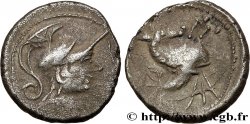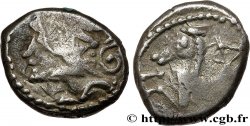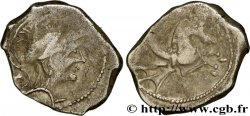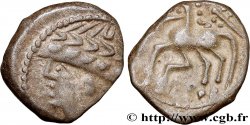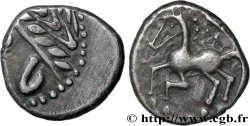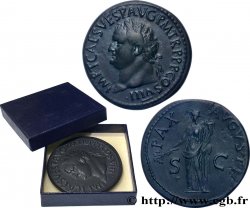v15_0454 - GALLIA - ALLOBROGES (Dauphiné area) Denier IAZVS au cheval galopant et à la rouelle
MONNAIES 15 (2002)
Starting price : 195.00 €
Estimate : 400.00 €
Realised price : 225.00 €
Number of bids : 3
Maximum bid : 280.00 €
Starting price : 195.00 €
Estimate : 400.00 €
Realised price : 225.00 €
Number of bids : 3
Maximum bid : 280.00 €
Type : Denier IAZVS au cheval galopant et à la rouelle
Date: Ier siècle avant J.-C.
Metal : silver
Diameter : 14 mm
Orientation dies : 10 h.
Weight : 1,76 g.
Rarity : R2
Coments on the condition:
Faiblesse de frappe sur les cheveux et sur l’arrière du cheval. Belle patine gris sombre
Catalogue references :
LT.2904 - BN.2901-2911 - ABT.- - RIG.manque - Sch/L.146-150 - Sch/SM.- - Sch/D.31 - Z.25 - CRN6.pl. III, 2
Obverse
Obverse legend : ANÉPIGRAPHE.
Obverse description : Tête laurée à gauche.
Reverse
Reverse legend : IAZVS.
Reverse description : Cheval galopant à gauche ; au-dessous, roue à quatre rayons perlée ; au-dessus, légende.
Commentary
Dans Monnayages Allobroges (CRN 6), l’auteur répertoriait 23 exemplaires de ce type 3a. E, 1983, Deroc classait ce type “Monnaie au cheval galopant ; classe I”. Cette monnaie est de mêmes coins de droit et de revers que l’exemplaire de l’Association du Musée de Vaux illustré page 240, n°7 du CRN 6, avec la même infime cassure de coin sur la croupe.







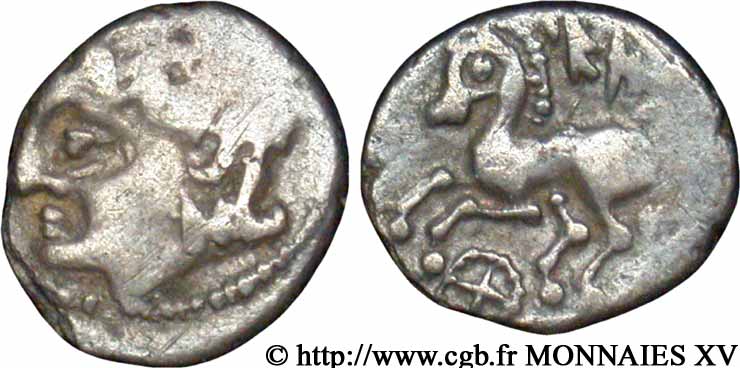
 Report a mistake
Report a mistake Print the page
Print the page Share my selection
Share my selection Ask a question
Ask a question Consign / sell
Consign / sell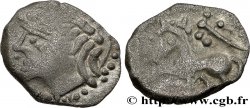
 Full data
Full data